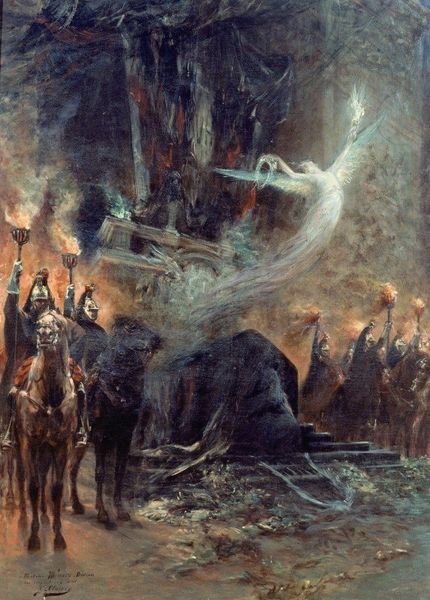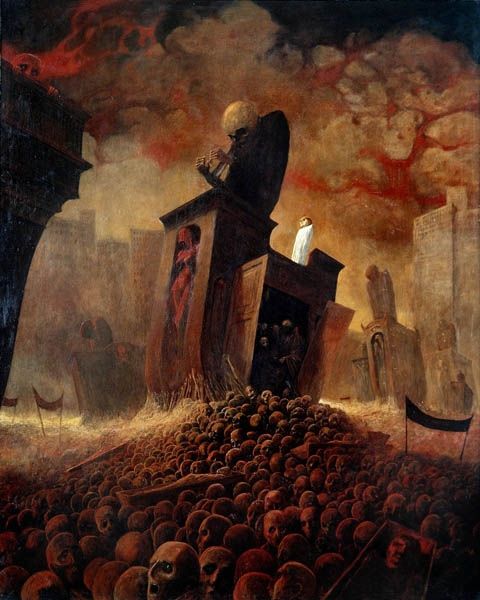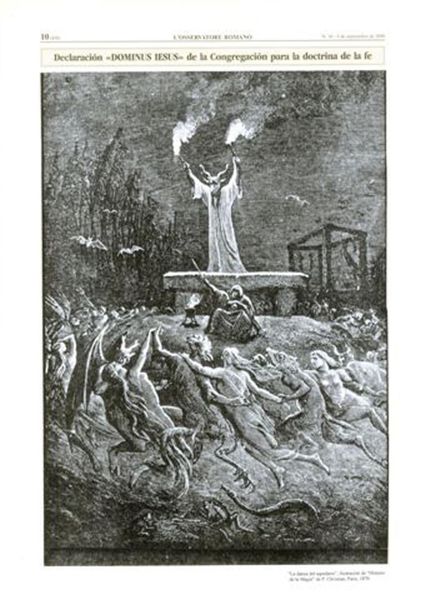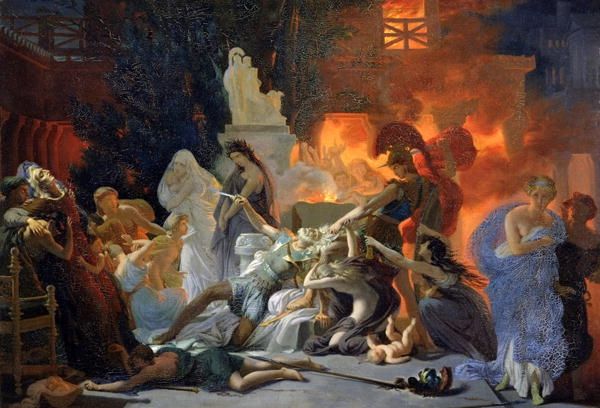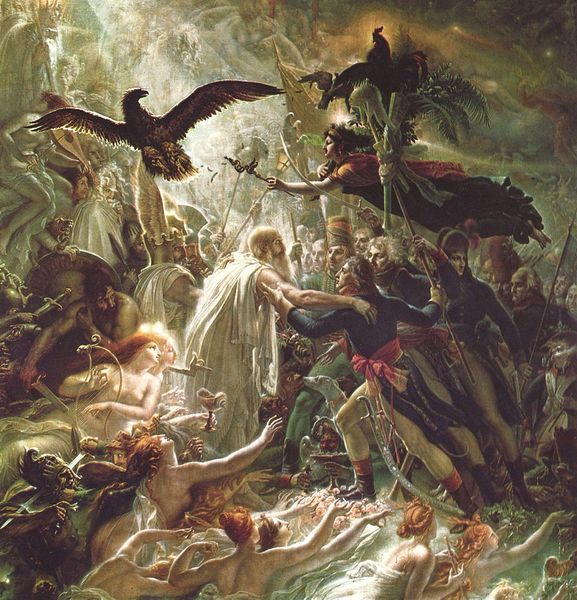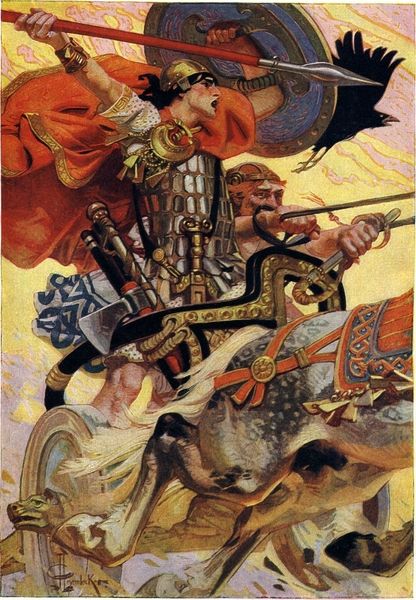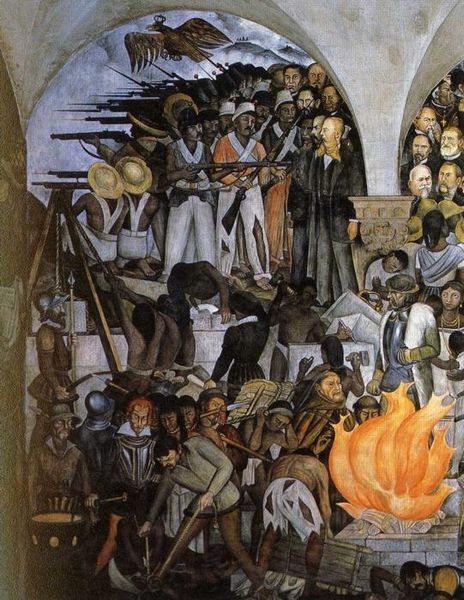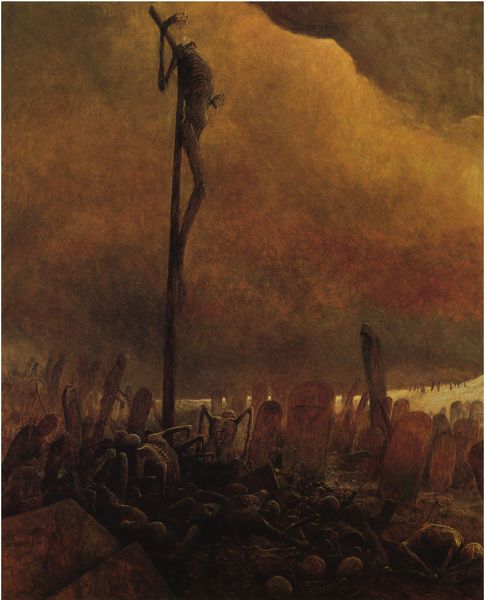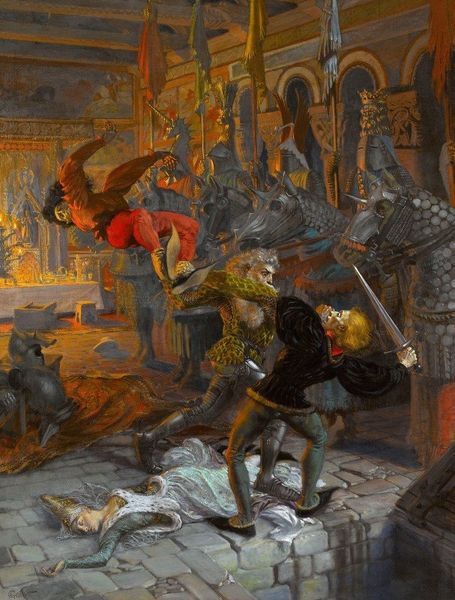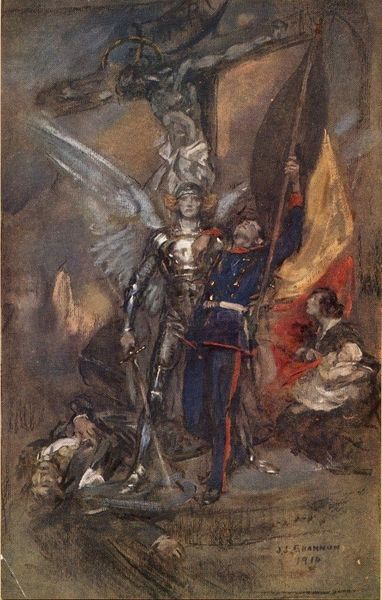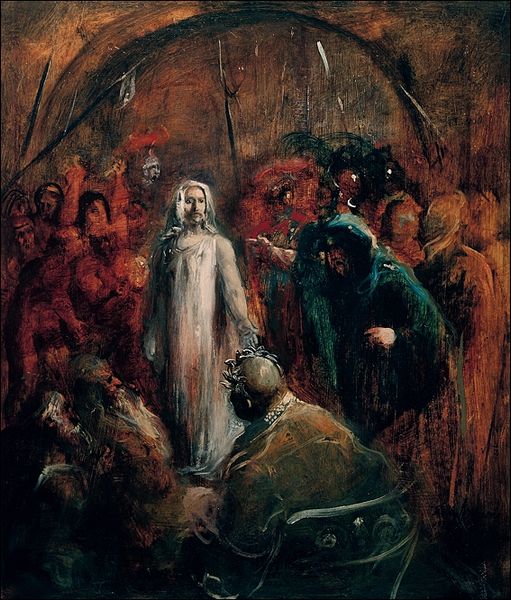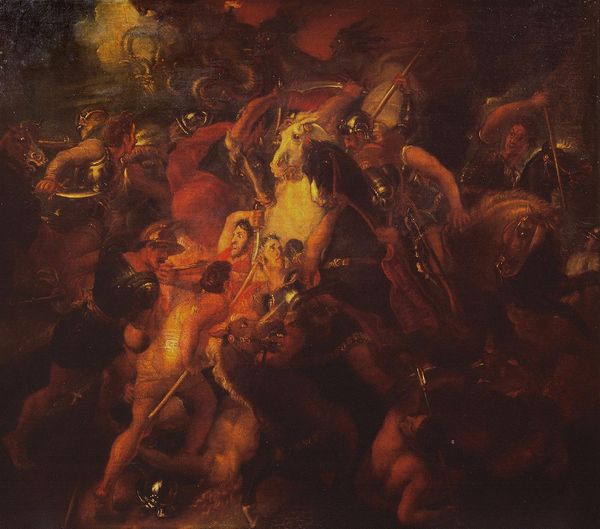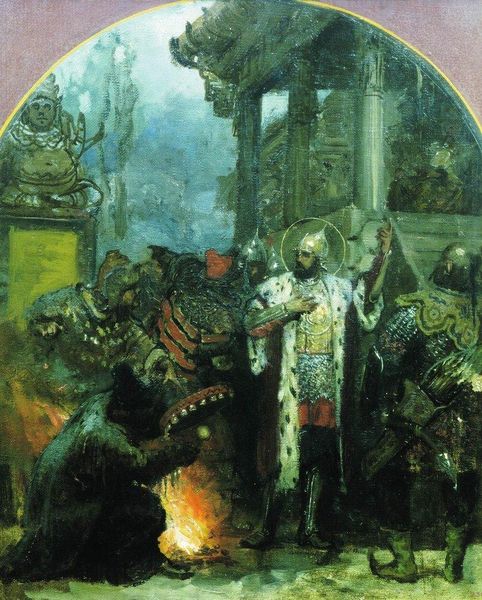
Copyright: Public Domain: Artvee
Georges Jules Victor Clairin created 'La Veillée funèbre' to depict a somber night vigil, a scene punctuated by flickering torchlight and solemn figures. Dominating the composition, the angel is a figure laden with symbolic weight. Consider how, since antiquity, winged figures have traversed cultures, evolving from pagan deities to Christian messengers. Now, here, this figure embodies solace, yet its spectral form hints at the liminal space between life and death. Torches, too, possess a dual nature. They cast light, but also evoke the fleeting nature of existence, a tradition resonating with ancient Roman funerary rites, where torch-lit processions honored the departed. The wreath of laurel, a classical symbol of triumph and eternal life, now laid upon the steps, echoes through history. It reminds us of ancient Greece, where it crowned victors, and resurfaces in Roman imperial art, signifying power. Yet, here, it morphs, becoming a poignant tribute, tinged with loss. This emblem demonstrates that such symbols are never static; they weave through time, their meanings layered and transformed by cultural memory, engaging us on a subconscious level as we grapple with mortality and remembrance.
Comments
No comments
Be the first to comment and join the conversation on the ultimate creative platform.
